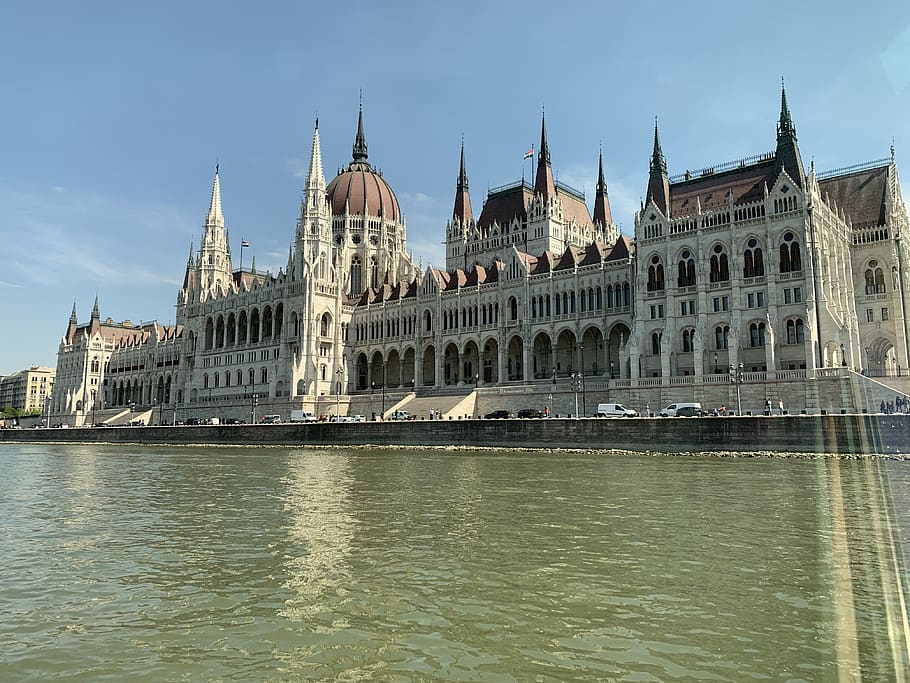From the thundering hooves of Attila the Hun to the elegance of the Ottoman Empire, Hungary’s historical journey is akin to a mesmerizing tapestry woven with the threads of valor, conquest, and cultural fusion. Nestled in the heart of Europe, this land of enchantment has witnessed the rise and fall of mighty empires, each leaving an indelible mark on its landscape and identity. Step into the time machine and embark on a captivating voyage through Hungary’s fascinating history, where the past is not merely a collection of dates and names, but a living testament to the grandeur and resilience of a nation. Join us as we traverse the annals of time, unearthing hidden treasures and unraveling the mysteries that have shaped Hungary into the captivating realm it is today.
The Mighty Conquerors Who Shaped Hungary’s Past
Explore the fascinating history of Hungary and discover the formidable conquerors who left an indelible mark on its past. From the intrepid Magyar warriors to the ambitious kings, these legendary figures shaped the nation’s identity and forged its destiny. Let us delve into the tales of these mighty conquerors that continue to echo through the ages.
1. Árpád the Great: As the leader of the Magyar tribes, Árpád played a pivotal role in the Hungarian conquests. With unrivaled courage and strategic brilliance, he led his people to establish the Hungarian homeland in the Carpathian Basin. Under his guidance, the medieval Kingdom of Hungary was born, laying the foundation for a powerful nation that would endure for centuries.
2. King Stephen I: Renowned as the first Christian king of Hungary, Stephen I’s reign marked a profound transformation in the nation’s history. Through his unwavering devotion to Christianity and astute governance, he built a strong central authority and fostered cultural and economic growth. Stephen’s legacy, crowned by his canonization as a saint, set Hungary on a path towards greatness.

Unveiling the Rich Legacy of Hungary’s Ottoman Empire
Hungary’s intricate history transcends borders and reveals a fascinating chapter that often goes unnoticed – the remarkable Ottoman Empire’s influence that once permeated its lands. The legacy left behind still whispers its tales to those with curious ears, offering a unique window into a lesser-known aspect of Hungary’s past. From architectural wonders to cultural nuances, the Ottoman era in Hungary is an intriguing puzzle waiting to be unraveled.
As one explores the rich heritage of Hungary’s Ottoman Empire, a plethora of hidden gems emerge, each with its own narrative to tell. Majestic mosques stand proudly amidst the modern cityscape, like the magnificent Gazi Kasim Pasha Mosque in Pécs, its timeless beauty intertwining Islamic and Hungarian architectural elements. Delve into the stunning Castle of Eger, a symbol of resilience that withstood the famous Siege of Eger, and witness the amalgamation of Ottoman and Hungarian artistry. Brace yourself for a sensory feast while sipping on a traditional Turkish coffee or indulging in the delectable culinary delights infused with Ottoman spices and flavors.
- Step into museums that showcase intriguing artifacts and invaluable insights into the history and art of the era.
- Immerse yourself in the mesmerizing music and dance traditions that intertwine Turkish and Hungarian melodies and rhythms.
- Discover the unique Ottoman baths dotting the landscape, each offering a tranquil oasis for relaxation and rejuvenation.
An expedition through Hungary’s Ottoman Empire invites you to witness the fusion of cultures, architecture, and customs that still shape the country today. It beckons the curious traveler to dive into a remarkable past, where ancient whispers echo, chronicles of an empire eager to be unraveled.

Exploring Hungary’s Historical Gems: Must-Visit Sites and Museums
Must-Visit Sites
Embark on a journey through Hungary’s rich history and discover its hidden gems that transcend time. From magnificent castles to quaint villages, the country boasts a plethora of must-visit sites that will transport you to a bygone era.
- Buda Castle: Perched majestically on the hills of Budapest, the Buda Castle offers a breathtaking view of the city. Dating back to the 13th century, this UNESCO World Heritage Site is a true historical masterpiece. Explore the castle’s intricate architecture, wander through its stunning courtyards, and visit the Budapest History Museum housed within its walls.
- Esztergom Basilica: As the largest church in Hungary, the Esztergom Basilica stands as a testament to the country’s religious heritage. Marvel at its grandeur and ascend to its dome for panoramic views of the Danube River and the surrounding landscape. Step inside to admire the stunning frescoes, ornate chapels, and the massive 18th-century pipe organ.
Unearth Hungary’s fascinating history by immersing yourself in the captivating world of its diverse museums. From art enthusiasts to history buffs, these museums offer a remarkable glimpse into the nation’s past.
- Hungarian National Museum: Begin your historical journey at the Hungarian National Museum in Budapest. Delve into Hungary’s past as you explore its extensive collection of artifacts, ranging from prehistoric times to the present. Discover the crown jewels of the Hungarian kings, marvel at ancient sculptures, and understand the nation’s struggles for independence through various exhibitions.
- Hungarian Railway Museum: For those with a passion for transportation, a visit to the Hungarian Railway Museum is a must. Situated in Budapest, this charming museum displays a vast collection of vintage trains, carriages, and locomotives. Step back in time as you admire these magnificent machines and learn about the significant role railways played in Hungary’s development.

The Cultural Fusion in Hungary: Influences of Attila the Hun and the Ottoman Empire
Hungary, a land rich in history and diverse cultural heritage, has been shaped by various influences over the centuries. Two prominent forces that have left their indelible mark on Hungarian culture are the fierce warrior Attila the Hun and the mighty Ottoman Empire. These influences, although distinct, have intermingled over time, creating a unique fusion that characterizes the cultural landscape of Hungary today.
Attila the Hun, renowned for his military prowess and leadership, once ruled vast lands that included present-day Hungary. His impact on Hungarian culture can be seen in various aspects, from language to folklore. The Hunnic language left traces in Hungarian vocabulary, with words like “haza” (homeland) and “tevé” (camel) bearing a resemblance. Additionally, the legends and sagas surrounding Attila the Hun have become an integral part of Hungarian folklore, contributing to the country’s rich storytelling traditions.
The Ottoman Empire, on the other hand, exerted its influence during the 16th and 17th centuries, leaving a lasting impression on Hungarian architecture, cuisine, and music. The Ottoman architectural style can still be observed in several buildings and structures, such as the iconic thermal baths in Budapest. Hungarian cuisine reflects a blend of Ottoman and native flavors, with dishes like “pogácsa” (savory pastry) and “túrós csusza” (noodles with cottage cheese) showcasing this fusion. Furthermore, traditional Hungarian music incorporates elements of Turkish melodies and rhythms, resulting in a distinctively vibrant and rhythmic sound.
The Conclusion
As we conclude our journey through the captivating annals of Hungarian history, one cannot help but be overwhelmed by the sheer magnitude of the tales that have unfolded. From the legendary might of Attila the Hun to the majestic rise of the Ottoman Empire, Hungary has borne witness to an extraordinary saga that has shaped its destiny.
Through the verses of time, Hungary has encountered conquests and struggles, triumphs and defeats, offering a kaleidoscope of narratives that have left an indelible mark on the nation’s identity. The echoes of ancient warriors and the whispers of emperors still linger in the cobblestone streets, a reminder of the extraordinary spirit that has defined this land.
As we traversed the chapters of history, we encountered dynasties that rose and fell, leaving behind architectural masterpieces and cultural treasures that continue to enthral visitors from around the world. From the grandeur of Buda Castle perched high upon its hill to the ethereal beauty of the thermal baths that have soothed weary souls for centuries, Hungary’s rich historical tapestry weaves effortlessly into the fabric of its present-day allure.
Yet, beyond the grand façades lie the intricate stories of ordinary people who weathered the storms of time, leaving their own indomitable spirit within the very foundation of this land. Hungary stands as a testament to the resilience and determination of a nation that was forged through a ceaseless evolution, defying the odds and overcoming adversity that threatened to shatter its unity.
Today, as we bid adieu to the historical labyrinth that has held us captive, we can do naught but marvel at Hungary’s wondrous journey. from its turbulent beginnings to its intricate dance with empires, this storied nation has emerged stronger, prouder, and, above all, deeply steeped in its own distinctive heritage.
May this exploration ignite a flame of curiosity within your heart and inspire you to seek out the tales that shape the destiny of your own homeland. For history, whether triumphant or tragic, remains a powerful testament to the extraordinary capabilities of humanity to endure, adapt, and create the tapestry of tomorrow.
So, as we conclude this fascinating chapter of Hungary’s historical voyage, we invite you to always remember the lessons and stories etched within its borders. Let us learn from the past, honoring the paths treaded by those who came before, as we forge our own narratives and step boldly into the promise of the future.

